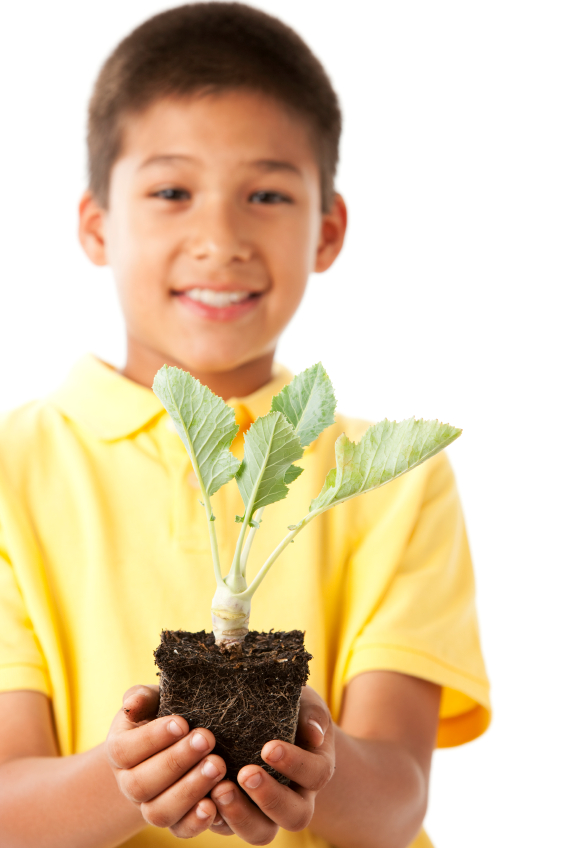 A school garden can provide an exciting environment in which students can work with many people while learning how to grow food. A successful garden may include parents, volunteers, teachers, and Master Gardeners. The first step towards being successful is planning. Forming a garden committee that discusses who is responsible for the various tasks, how the garden will fulfill needs or objectives of all those involved and how to sustain the garden even when school is not in session is important. There are many great resources to assist the committee such as books, websites and local extension offices. A Cornell blog which focused on results from multiple gardening programs shows a multitude of positive impacts on both direct and indirect academic outcomes from these efforts!
A school garden can provide an exciting environment in which students can work with many people while learning how to grow food. A successful garden may include parents, volunteers, teachers, and Master Gardeners. The first step towards being successful is planning. Forming a garden committee that discusses who is responsible for the various tasks, how the garden will fulfill needs or objectives of all those involved and how to sustain the garden even when school is not in session is important. There are many great resources to assist the committee such as books, websites and local extension offices. A Cornell blog which focused on results from multiple gardening programs shows a multitude of positive impacts on both direct and indirect academic outcomes from these efforts!
- Finding a location is first on the committees’ “to do” list. The site chosen should be one that has at least six to eight hours of sun daily. Most vegetables that are grown need full sun for best growth. Access to water is necessary, so having the janitor check that outside faucets are in working order is important.
- Next on the list is having the soil tested in the site chosen. This soil test will let you know what nutrients need to be improved in the soil. Loose, fertile, well-drained soil will help make this gardening experience better. Soil testing is only about $20.00 and well worth the investment.
- Next is deciding what to plant. Getting the garden planted in early April may allow some harvest before the school year ends. Growing plants that mature quickly such as lettuce, radishes, sunflowers, spinach, bush beans, and zucchini would be a good place to begin.
- Maintaining the garden is the next step. Many tasks and learning experiences can happen during this time. The garden will need weeded, watered, and monitored for harvesting. These could make great topics of discussion or journaling for classroom students.
- Scheduling summer tasks is the next item on the committee’s list of items to complete.
- Last but by no means least, enjoy the products of the garden! It is important to harvest and eat the food that is grown! Having a salad party or other recipes using the vegetables will help the students enjoy their efforts.
- Finally, starting small and keeping the garden simple will lead to success and a sense of ownership!
Notes:
Some schools do not have sites for a garden. In these situations a nearby vacant lot may be available for use, raised beds, container gardening, EarthBoxes©, or smart pots may also be options. EarthBoxes© are self-contained plastic growing units with a water reservoir beneath the soil. The growing area is covered with black plastic therefore weeding is eliminated. The soil in the EarthBox© warms in early spring so plants get a fast start. Watering is done through a tube that goes through the soil into the reservoir.
The smart pot is a soft-sided fabric container that has rigidity and holds its shape. They are available in a variety of sizes. These like the EarthBox© can be placed on concrete.
For more school garden resources, click here!
Contributor
Liz Smith Ohio State University Extension
Sources
http://web.extension.illinois.edu/state/newsdetail.cfm
http://blogs.cornell.edu/garden/
http://urbanext.illinois.edu/firstgarden/planning/school.cfm
